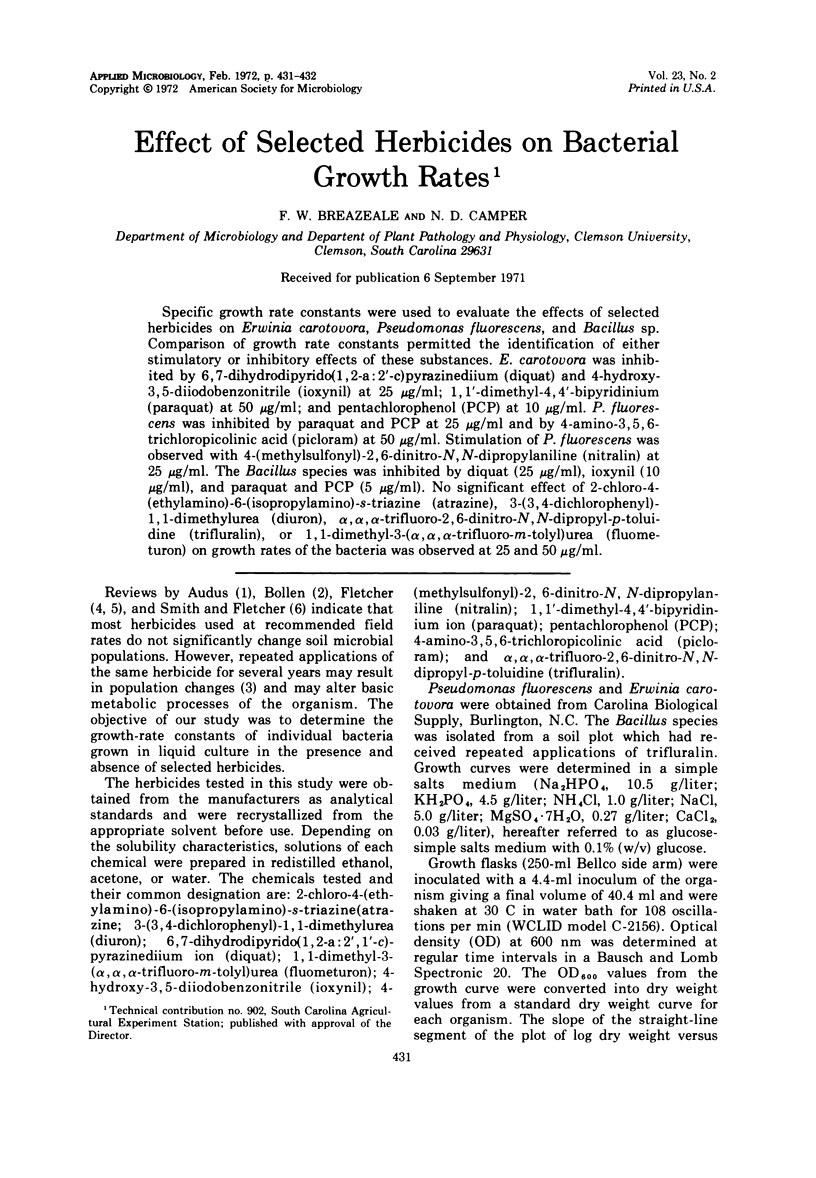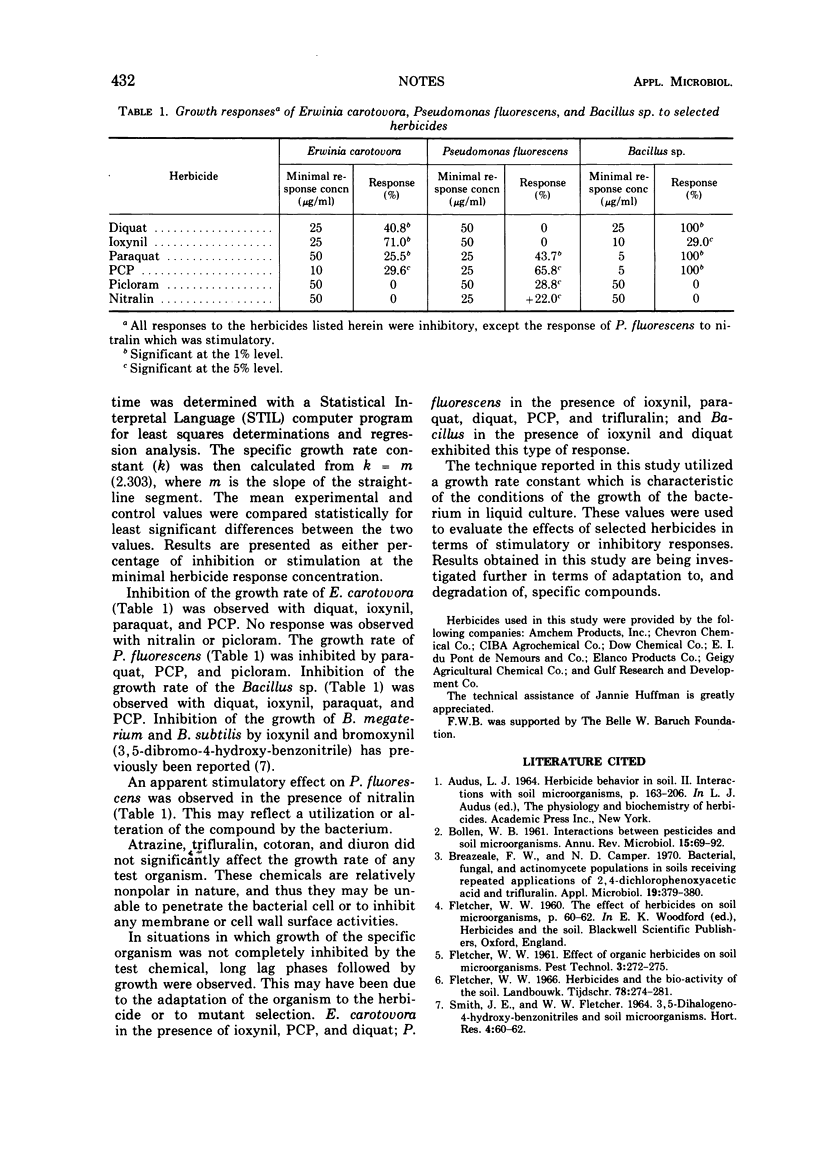Abstract
Specific growth rate constants were used to evaluate the effects of selected herbicides on Erwinia carotovora, Pseudomonas fluorescens, and Bacillus sp. Comparison of growth rate constants permitted the identification of either stimulatory or inhibitory effects of these substances. E. carotovora was inhibited by 6,7-dihydrodipyrido(1,2-a:2′-c)pyrazinediium (diquat) and 4-hydroxy-3,5-diiodobenzonitrile (ioxynil) at 25 μg/ml; 1,1′-dimethyl-4,4′-bipyridinium (paraquat) at 50 μg/ml; and pentachlorophenol (PCP) at 10 μg/ml. P. fluorescens was inhibited by paraquat and PCP at 25 μg/ml and by 4-amino-3,5,6-trichloropicolinic acid (picloram) at 50 μg/ml. Stimulation of P. fluorescens was observed with 4-(methylsulfonyl)-2,6-dinitro-N,N-dipropylaniline (nitralin) at 25 μg/ml. The Bacillus species was inhibited by diquat (25 μg/ml), ioxynil (10 μg/ml), and paraquat and PCP (5 μg/ml). No significant effect of 2-chloro-4-(ethylamino)-6-(isopropylamino)-s-triazine (atrazine), 3-(3,4-dichlorophenyl)-1,1-dimethylurea (diuron), α,α,α-trifluoro-2,6-dinitro-N,N-dipropyl-p-toluidine (trifluralin), or 1,1-dimethyl-3-(α,α,α-trifluoro-m-tolyl)urea (fluometuron) on growth rates of the bacteria was observed at 25 and 50 μg/ml.
Full text
PDF

Selected References
These references are in PubMed. This may not be the complete list of references from this article.
- Breazeale F. W., Camper N. D. Bacterial, fungal, and actinomycete populations in soils receiving repeated applications of 2,4-dichlorophenoxyacetic acid and trifluralin. Appl Microbiol. 1970 Feb;19(2):379–380. doi: 10.1128/am.19.2.379-380.1970. [DOI] [PMC free article] [PubMed] [Google Scholar]


